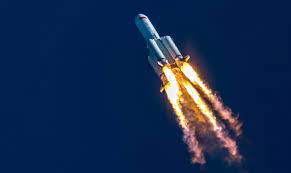China's Long March 9: A Game-changer for Space Exploration
Science & Technology SciencePosted by pallavi on 2024-07-11 04:44:46 |
Share: Facebook | Twitter | Whatsapp | Linkedin Visits: 157

China's Long March 9 rocket is poised to revolutionize its space program, matching the ambitions of SpaceX’s Starship. Initially conceived as an expendable rocket, the Long March 9 is now being developed as a reusable super heavy lift vehicle. This shift was officially announced on April 24 during China's spaceflight day celebrations.
Specifications and Capabilities
With a capacity to launch 150 tonnes to low Earth orbit (LEO) and 50 tonnes to lunar transfer orbit, the Long March 9 is integral to China’s 14th Five-Year Plan (2021-2025) and its 2021 White Paper on Space Activities. The first launch of the basic model is targeted for 2030, with a reusable version expected by 2040. This development underscores China's commitment to reducing launch costs and advancing its space capabilities.
Strategic Importance
The Long March 9 is essential for China's ambitious space projects, including the International Lunar Research Station (ILRS) planned for 2036, human missions to the Moon and Mars, asteroid exploration, and the construction of space-based solar power (SBSP) satellites. The rocket will support the development of lunar bases and mining facilities, with a particular focus on the strategic significance of lunar resources.
Advances in Reusable Technology
China has already made significant strides in reusable technology, exemplified by the YF-100N engine. This engine, featuring advanced manufacturing techniques like 3D printing and automatic welding, will be used in the Long March 5G rocket, slated for launch by 2027. The Long March 5G will facilitate reusable transportation to the Tiangong space station and manned lunar missions.
Development of Ultra-Large Propellant Tanks
The development of the Long March 9 includes creating ultra-large diameter propellant tanks, a critical component for super heavy lift rockets. The China Academy of Launch Vehicle Technology (CALT) has already developed a 10-meter-diameter tank, showcasing China's advanced manufacturing capabilities.
Search
Categories
Recent News
- Hyderabad Police Uncover RBI Scam: Beware of Fake Links
- Hyderabad Firm's Email Hacked: A Costly Lesson in Cybercrime
- Indian Schools Face a Hidden Drug Crisis
- Fake Deposit Links: RBI's Urgent Public Alert
- Hyderabad's Fight Against Drugs: A Collaborative Approach
- Hyderabad's Government Buildings Targeted: A Hoax Bomb Scare
- Senior Citizens Lose Millions in Hyderabad's Digital Scam Spree
- Hyderabad's Anti-Narcotics Drive: 11 Detained for Ganja Consumption
Popular News
- Navigating IPO Market Dynamics Amid Volatility and Regulatory Changes
- Innovative Green Practices and Environmental Initiative
- Massive Worldwide Microsoft Outage Disrupts Multiple Sectors
- తెలుగుదేశం పార్టీ - పేదరికాన్ని నిర్మూలించడంలో వాగ్దానం
- Universities Embrace Remote Learning Technologies Amidst Ongoing Pandemic